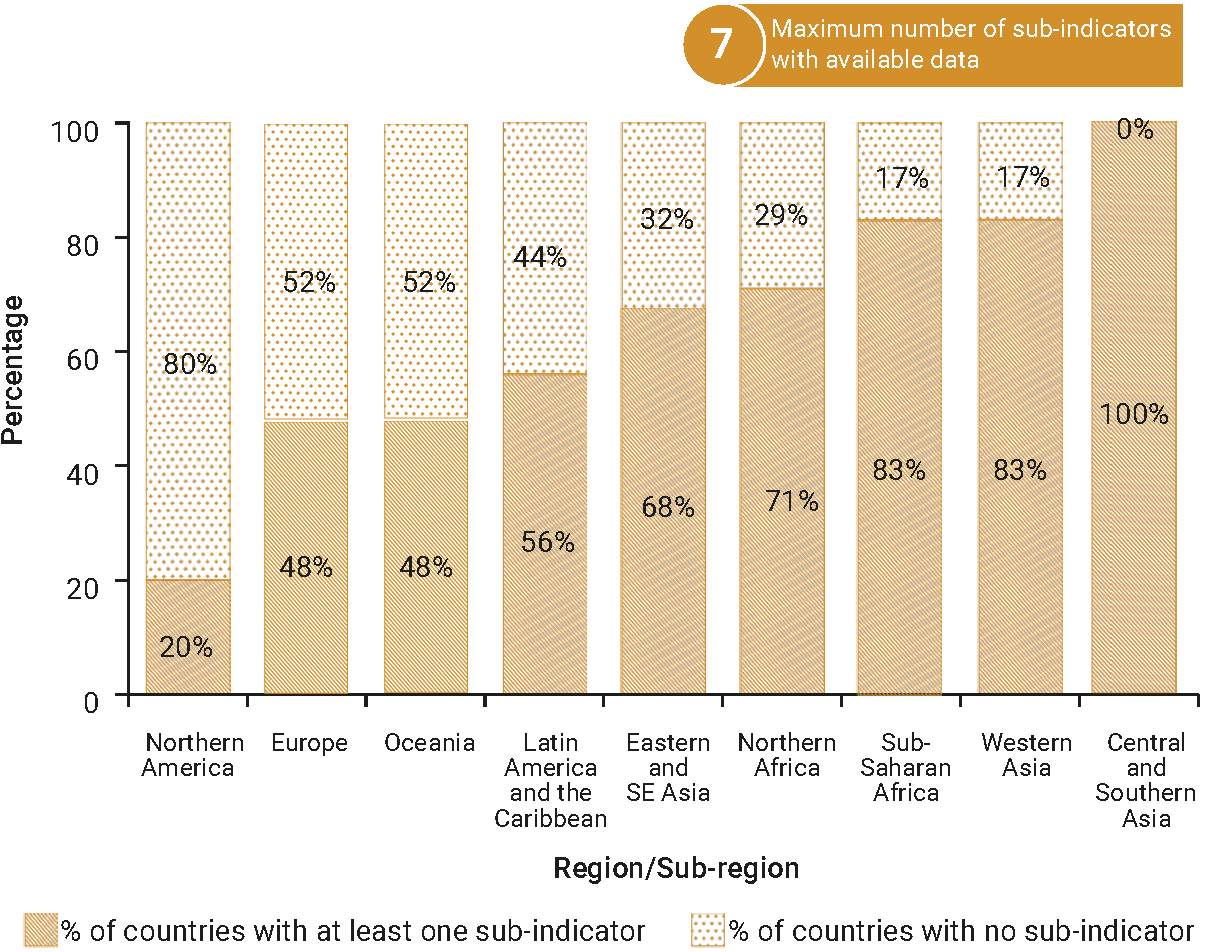SDG Indicator 11.5.2: Direct economic loss attributed to disasters in relation to global gross domestic product (GDP)
1. Key features and metadata
Definition: This indicator measures the ratio of direct economic loss attributed to disasters in relation to GDP.
| Sub-indicator | Disaggregated by |
|---|---|
|
Direct economic loss attributed to disasters (current USD) |
No current data disaggregation available.
|
|
VC_DSR_LSGP Direct economic loss attributed to disasters relative to GDP (%) |
|
|
VC_DSR_AGLH Direct agriculture loss attributed to disasters (current USD) |
|
|
VC_DSR_CILN Direct economic loss resulting from damaged or destroyed critical infrastructure attributed to disasters (current USD) |
|
|
VC_DSR_CHLN Direct economic loss to cultural heritage damaged or destroyed attributed to disasters (millions of current USD) |
|
|
VC_DSR_DDPA Direct economic loss to other damaged or destroyed productive assets attributed to disasters (current USD) |
Sources of information: Data collected from national line ministries, national disaster management agencies, civil protection agencies, and meteorological agencies via the Sendai Framework Monitor (UNDRR).
Related SDG Indicators: 1.5.2 (duplicates), 13.1.2 (Number of countries that adopt and implement national disaster risk reduction strategies), and 13.1.3 (Proportion of local governments that adopt and implement local disaster risk reduction strategies).
2. Data availability by region, SDG Global Database, as of 02 July 2025

3. Proposed disaggregation, links to policymaking and its impact
| Proposed disaggregation | Link to policymaking | Impact |
|---|---|---|
|
Direct economic loss attributed to disasters, by administrative unit (millions of current USD) Applies to:
|
Understanding trends in disaster-related economic losses helps countries formulate and implement policies to reduce them. This disaggregation provides complementary information on the economic assessment of direct losses at the level of administrative units defined by countries and is useful for gaining a clear view of the localization of disaster costs(UN 2016a; UNDRR 2017). It is key information for planning and implementing disaster risk reduction strategies at a local level and for monitoring the economic impact of disasters, especially in the case of large-scale disasters which account for the greater level of damage(UNDRR 2023). It contributes to the Sendai Framework for Disaster Risk Reduction, Target C: Reduce direct disaster economic loss in relation to global gross domestic product by 2030(UN 2015a). |
Disasters impact the poor who are the most exposed and endure the greatest relative losses. Implementing targeted policies at the level of administrative units helps reduce the impact of disasters. For example, loss of income, consumption and welfare reduction or adverse effects on long-term socio-economic development. Addressing the disaster-poverty nexus requires a transformative and collaborative approach for disaster risk governance, including the poor and most vulnerable groups of the population(UNDRR 2022a). |
|
Direct economic loss attributed to disasters, by hazardtype (millions of current USD)(UNDRR-ISC 2021):
Applies to:
|
This disaggregation provides valuable information on the type of hazard causing economic loss. A sound understanding of the nature of disaster-related economic consequences is essential for developing risk-informed policies(UN 2016a; UNDRR 2017). From this perspective, each category of hazards has a specific pattern of impact on the different categories of assets, which is crucial. Since disasters are the result of interaction of hazards with the vulnerability and exposure of the population, in addition to its coping capacity, this information is relevant for developing policies aimed at both disaster risk prevention (i.e. avoid hazards from becoming disasters) and disaster management and related post-disaster interventions. It contributes to the Sendai Framework for Disaster Risk Reduction, Target C: Reduce direct disaster economic loss in relation to global gross domestic product by 2030(UN 2015a). |
A more systemic approach recognizing the complex, dynamic and cascading nature of disaster occurrence needs to be applied. One major pathway to facilitate this change of paradigm is to integrate the real cost of risk into both the investment and insurance systems and national fiscal policy, notably the social costs and the impact of climate change and ecosystems destruction(UNDRR 2022a; UNDRR n.d.a). |

